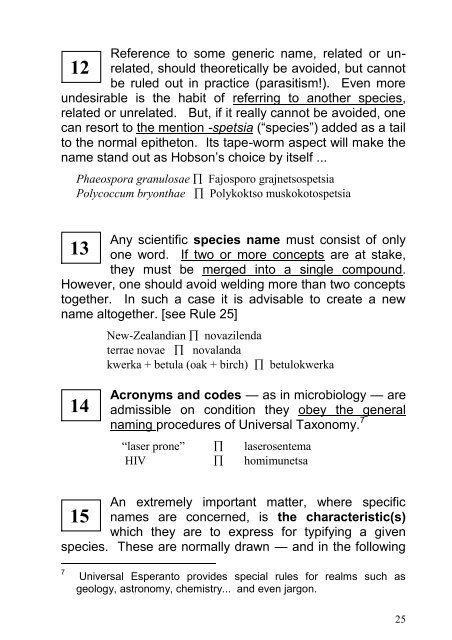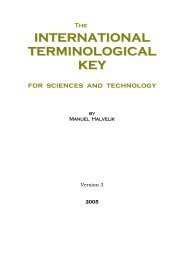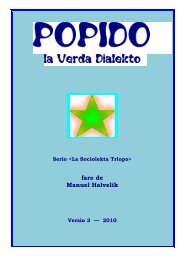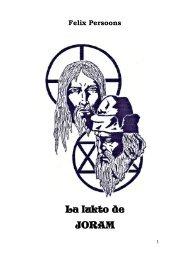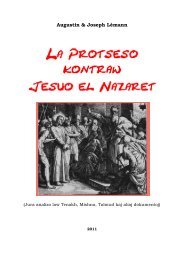the TRIMERAL SYSTEM in BIOLOGICAL TAXONOMY - universala ...
the TRIMERAL SYSTEM in BIOLOGICAL TAXONOMY - universala ...
the TRIMERAL SYSTEM in BIOLOGICAL TAXONOMY - universala ...
You also want an ePaper? Increase the reach of your titles
YUMPU automatically turns print PDFs into web optimized ePapers that Google loves.
Reference to some generic name, related or un-<br />
12 related, should <strong>the</strong>oretically be avoided, but cannot<br />
be ruled out <strong>in</strong> practice (parasitism!). Even more<br />
undesirable is <strong>the</strong> habit of referr<strong>in</strong>g to ano<strong>the</strong>r species,<br />
related or unrelated. But, if it really cannot be avoided, one<br />
can resort to <strong>the</strong> mention -spetsia (“species”) added as a tail<br />
to <strong>the</strong> normal epi<strong>the</strong>ton. Its tape-worm aspect will make <strong>the</strong><br />
name stand out as Hobson’s choice by itself ...<br />
Phaeospora granulosae Fajosporo grajnetsospetsia<br />
Polycoccum bryonthae Polykoktso muskokotospetsia<br />
Any scientific species name must consist of only<br />
13 one word. If two or more concepts are at stake,<br />
<strong>the</strong>y must be merged <strong>in</strong>to a s<strong>in</strong>gle compound.<br />
However, one should avoid weld<strong>in</strong>g more than two concepts<br />
toge<strong>the</strong>r. In such a case it is advisable to create a new<br />
name altoge<strong>the</strong>r. [see Rule 25]<br />
14<br />
New-Zealandian novazilenda<br />
terrae novae novalanda<br />
kwerka + betula (oak + birch) betulokwerka<br />
Acronyms and codes — as <strong>in</strong> microbiology — are<br />
admissible on condition <strong>the</strong>y obey <strong>the</strong> general<br />
nam<strong>in</strong>g procedures of Universal Taxonomy. 7<br />
“laser prone” laserosentema<br />
HIV homimunetsa<br />
An extremely important matter, where specific<br />
15<br />
names are concerned, is <strong>the</strong> characteristic(s)<br />
which <strong>the</strong>y are to express for typify<strong>in</strong>g a given<br />
species. These are normally drawn — and <strong>in</strong> <strong>the</strong> follow<strong>in</strong>g<br />
7 Universal Esperanto provides special rules for realms such as<br />
geology, astronomy, chemistry... and even jargon.<br />
25


